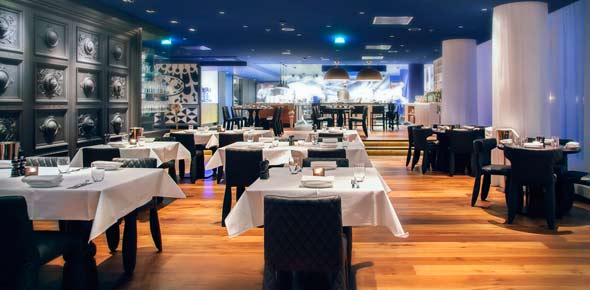Section 12.5—quiz: Menu Pricing

Section 12.5—Quiz: Menu Pricing
- 1.
The plate cost is an average cost for all non-entrée items, including salad, vegetables, bread, butter, and non-alcoholic beverages. In which of the following pricing methods is this important?
- A.
Prime ingredient mark-up.
- B.
Contribution margin.
- C.
Simple prime costs.
- D.
Mark-up with accompaniment costs.
Correct Answer
D. Mark-up with accompaniment costs.Explanation
In the mark-up with accompaniment costs pricing method, the plate cost, which includes the cost of non-entrée items such as salad, vegetables, bread, butter, and non-alcoholic beverages, is important. This method calculates the selling price by adding a mark-up percentage to the total cost of the meal, including the accompaniment costs. Therefore, considering the plate cost is crucial in determining the final selling price in this pricing method.Rate this question:
-
- 2.
Jennifer is the manager at the Fortibrand Foccocica Station. In order to draw more people into the restaurant, she sets the price of their specialty appetizer unusually low, hoping that once there the guests will order other, more expensive items. Which of the following pricing methods is Jennifer using?
- A.
Reasonable price.
- B.
Highest price.
- C.
Loss leader.
- D.
Intuitive price.
Correct Answer
C. Loss leader.Explanation
Jennifer is using the pricing method known as "loss leader." This strategy involves setting the price of a particular product or service lower than its cost in order to attract customers and increase overall sales. By setting the price of the specialty appetizer unusually low, Jennifer aims to entice more people to visit the restaurant. She hopes that once the guests are there, they will be tempted to order other, more expensive items, thus making up for the initial loss on the appetizer.Rate this question:
-
- 3.
What refers to the amount left after a menu item’s food cost is subtracted from its selling price?
- A.
Contribution margin.
- B.
Prime costs.
- C.
Accompaniment costs.
- D.
Plate cost.
Correct Answer
A. Contribution margin.Explanation
The contribution margin refers to the amount left after subtracting a menu item's food cost from its selling price. It represents the portion of revenue that contributes towards covering fixed costs and generating profit. Prime costs refer to the direct costs of producing a menu item, including the cost of ingredients and labor. Accompaniment costs are the costs of side dishes or additional items served with a menu item. Plate cost refers to the total cost of producing a menu item, including both direct and indirect costs.Rate this question:
-
- 4.
When a manager takes a guess about the selling price, he or she is using the:
- A.
Simpe mark-up pricing method.
- B.
Intuitive price method.
- C.
Reasonable price method.
- D.
Prime cost pricing method.
Correct Answer
B. Intuitive price method.Explanation
The intuitive price method refers to when a manager makes a guess or uses their intuition to determine the selling price of a product or service. This approach is based on their experience, knowledge of the market, and understanding of customer preferences. It may not involve detailed calculations or analysis, but rather relies on the manager's instincts and judgment.Rate this question:
-
- 5.
When a manager assesses the labor costs, food costs, and service costs of a menu item to determine a base selling cost, he or she is using the:
- A.
Subjective pricing method.
- B.
Simple mark-up pricing method.
- C.
Contribution margin pricing method.
- D.
Simple prime cost pricing method.
Correct Answer
D. Simple prime cost pricing method.Explanation
The manager is using the simple prime cost pricing method because they are considering the labor costs, food costs, and service costs of a menu item in order to determine a base selling cost. This method focuses on calculating the total cost of producing the item, including direct costs such as labor and materials. By using this method, the manager can ensure that the selling price covers all the costs associated with producing the item and allows for a profit margin.Rate this question:
-
- 6.
Give the formula for determining the multiplier used in the ingredients mark-up method.
- 7.
Give the formula for determining the base selling price in the ingredients mark-up method.
- 8.
Give the formula for determining the mark-up with accompaniment costs method.
- 9.
Give the formula for determining the average contribution margin needed per guest.
- 10.
Give the formula for determining the labor cost per guest.
Quiz Review Timeline +
Our quizzes are rigorously reviewed, monitored and continuously updated by our expert board to maintain accuracy, relevance, and timeliness.
-
Current Version
-
Mar 19, 2023Quiz Edited by
ProProfs Editorial Team -
Feb 03, 2010Quiz Created by
Aoht
 Back to top
Back to top


